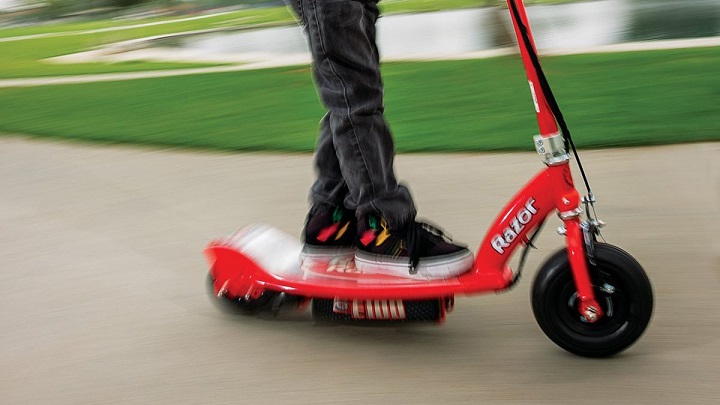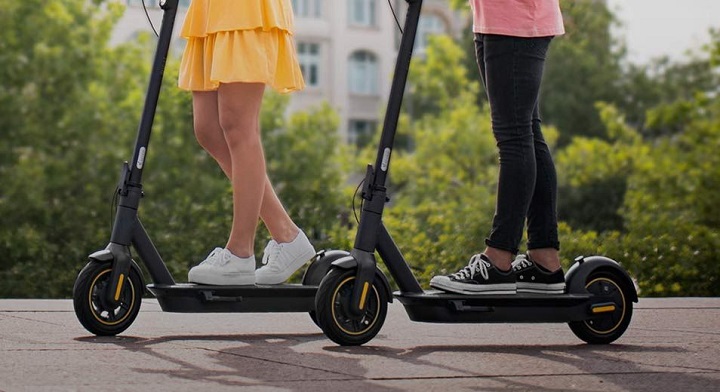Playing and being active are two of the most crucial elements of a child’s development in the first few years of their life. Considering the fact that preschoolers are highly active, it’s important that they use the energy to move, learn, discover new things, and have fun while doing it. Children up to 5 years of age, should be physically active for at least three hours each day and should not be sedentary for more than one hour at a time. In light of this, a great way to implement more physical activity in your child’s life is to introduce him/her to scooting.
Benefits of Scooting

Being physically active has also been shown to offer emotional and cognitive advantages for children, such as an increase in happiness, better self-esteem, greater teamwork abilities, and more friends made along the way. And more importantly, there are health advantages like muscle growth and strength, balance, coordination, better sleeping routines, and maintaining a healthy weight.
Your kids should be active and ready to start learning and having fun instead of being restricted in a stroller or car seat when travelling small distances. The scooters may be used particularly for going on easy walking distances, inside the house on a rainy day, outside in the garden, at the park, or on the way to preschool. They will gain skills that will benefit their athletic performance and give them the confidence to attempt new things. If you’re still not convinced, consider the following benefits of buying a scooter for your child.
Getting Your Kid to Spend More Time Outside
If you are having difficulties convincing your children to spend less time on the internet and more time outside, you’re not alone. The easiest route to encourage your child to spend more time outside is to provide an interesting and engaging way for them to spend those hours in fresh air being active all day. That is by visiting a well-stocked scooter store and purchasing one of the complete scooters for sale.
Developing Motor Skills and Balance
Learning and establishing a sense of balance is critical to the development of every kid. That is why scooting is so enjoyable. It requires the kid to stand up straight and balancing on one leg while kicking with the other. Some starter complete scooters for sale for youngsters include a ‘lean-to steer’ and a steering lock function, which promote excellent balance while leaning through a turn.
Scooting necessitates the use of both arms and legs independently, which aids in the development of motor skills. One foot kicks as the other balances, and both hands are on the handlebars of the scooter, making sure the balance is right. All of this happens as the head and eyes are scanning forwards and around for potential impediments. If the kid wants to come to a complete stop, they will use one foot to push the rear fender brake pad while simultaneously turning the scooter or slowing down sufficiently to safely place the other foot on the ground.
Muscle Development
Balance necessitates core muscular power, pushing the scooter with the foot necessitates leg strength, and fast decision making necessitates cerebral strength. Every time a child rides a scooter, it’s strengthening their muscles. When the kid pushes off from a stop, the ankle, calf, hamstrings, and glutes are engaged and re-engaged each time they push to gain speed. Staying upright indicates that their core muscles, particularly the abdominal and lower back muscles, are engaged. Children’s scooters are an excellent approach to enhance muscular strength and growth.
Decision Making Skills
Riding one of these kids scooters, believe it or not, requires critical thinking and decision-making abilities. This is a great approach for your youngster to learn how to make quick and correct judgments when confronted with an obstacle on the road. Every youngster riding a scooter must make rapid decisions about whether to slow down or when to halt, to turn, and how much to lean into the steer without falling over. Looking for barriers and choosing how to best avoid them is an excellent example of decision-making skills. Children will have to think fast about how much force is needed to put on the brakes in order to stop in time, or which way to turn and when to turn to avoid any hurdles.
Important Safety Measures

Make sure you discuss some road rules with your child before leaving the house and picking up the scooter right away. Your youngster may not understand that red denotes stop and green denotes go, or that the striped lines on the road are a crosswalk for walkers, cyclists, and, yes, scooter riders, so you should spend some time explaining to your child the laws of the road, or consider purchasing a picture book or handy sign that’ll help in the process of learning.
You may go through them quickly or, better yet, ask your youngster to repeat the rules after you so you know they’re well understood. Have a strategy in place for dealing with your child if he or she breaches or ignores an essential safety rule. Of course, keeping your kid safe is just as essential as having fun and reaping the advantages of scooter riding.
You and your child may feel safer knowing that some of the inevitable falls will be softened by protective gear, depending on where your child will be riding, how talented they are, and how fast they may end up going. Because the elbows and knees are common targets for asphalt during falls, so you can avoid bumps, bruises, scrapes, and perhaps fractures by utilizing elbow and knee pads.
Helmets are required in all Australian states and territories when riding all kinds of and in certain jurisdictions, when riding scooters, skateboards, or rollerblades. Helmets for children are available in a broad range of sizes, so you should have no problem choosing one that suits your youngster. The helmet should fit tightly and sit low on your child’s forehead. It’s advisable to tighten any straps and buckles and use sizing pads, if necessary, to adapt the helmet to your child’s head.